Abstract
The apparent heat resistance of spores of Bacillus megaterium, B. subtilis, B. cereus, B. stearothermophilus, and Clostridium botulinum type E in lipids was investigated and compared with the resistance of the spores in phosphate buffer solution. The most pronounced increase in heat resistance was noted for B. subtilis and C. botulinum type E, the increase varying with the type of lipid used. A high water content of the lipids used as heating menstruum lowered the heat resistance of the spores. Possible explanations for the high heat resistance of spores in lipids are discussed.
Full text
PDF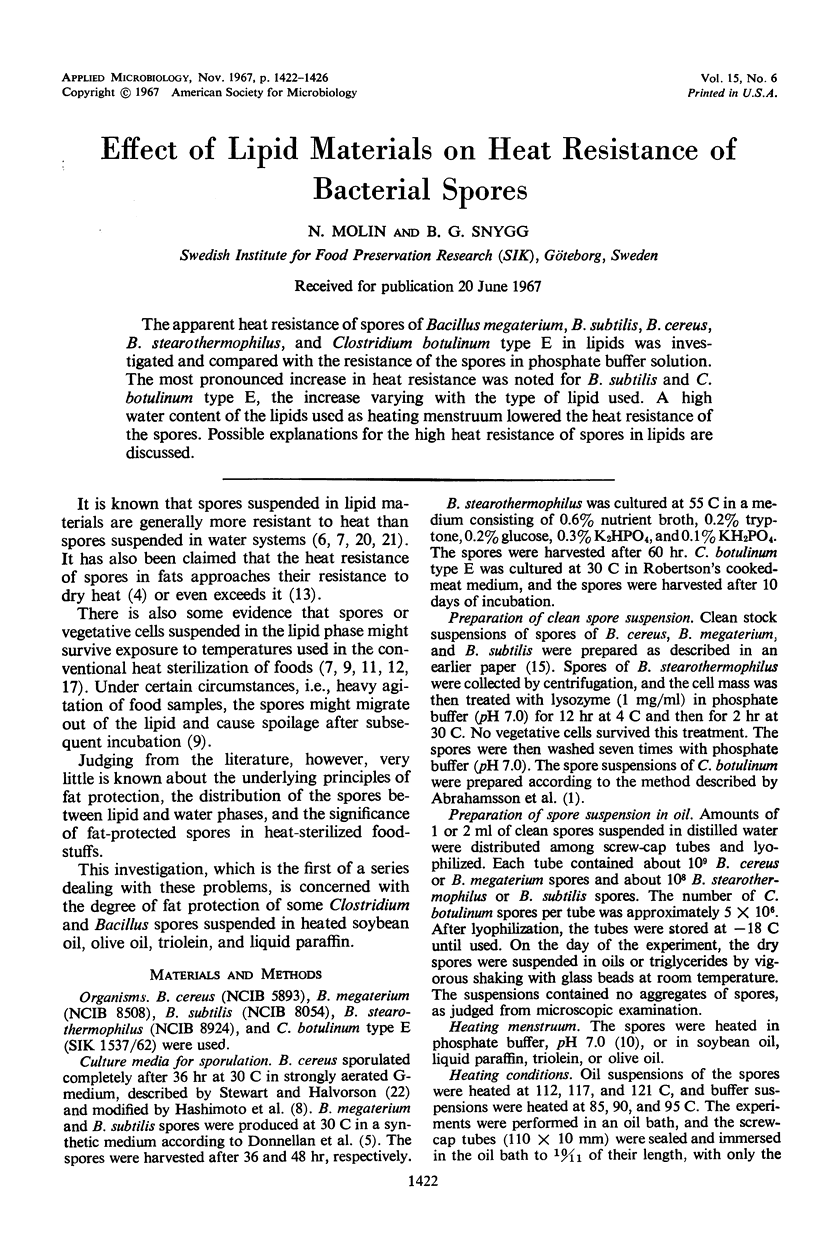
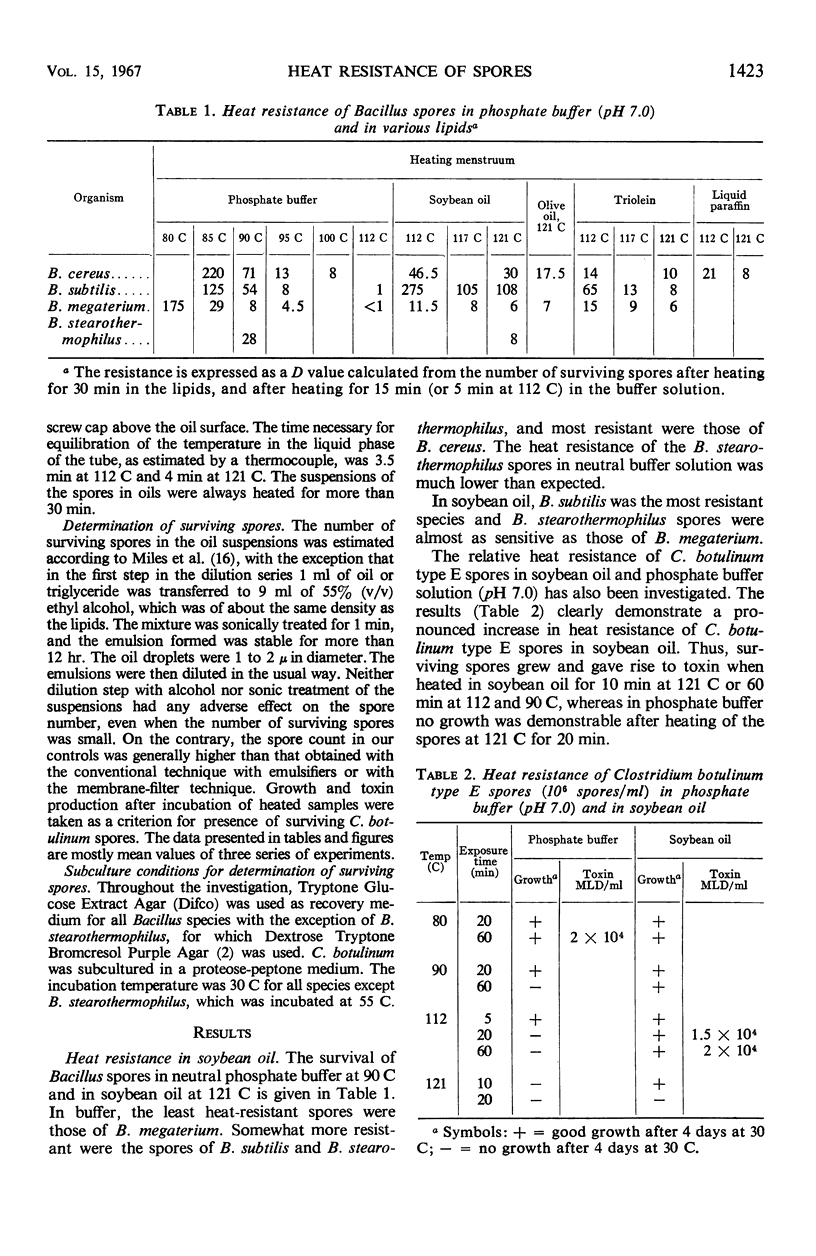
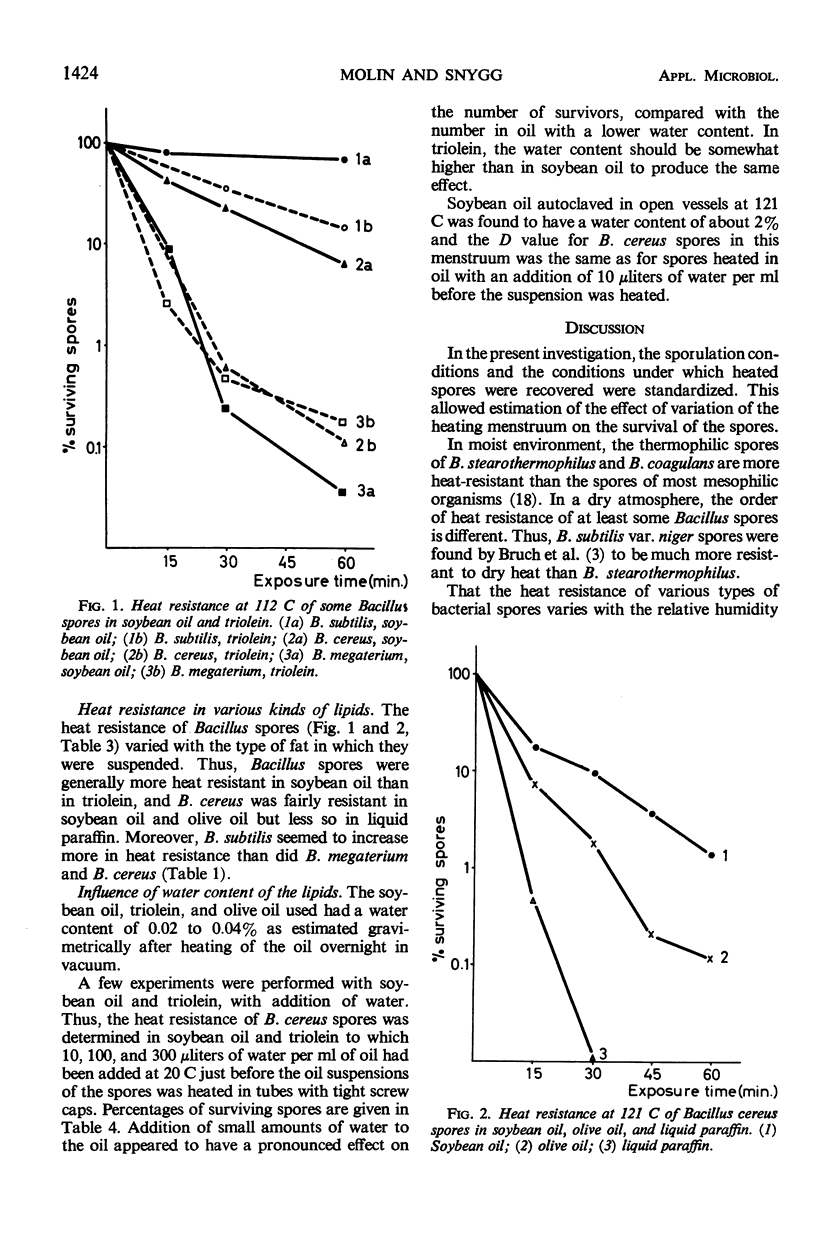
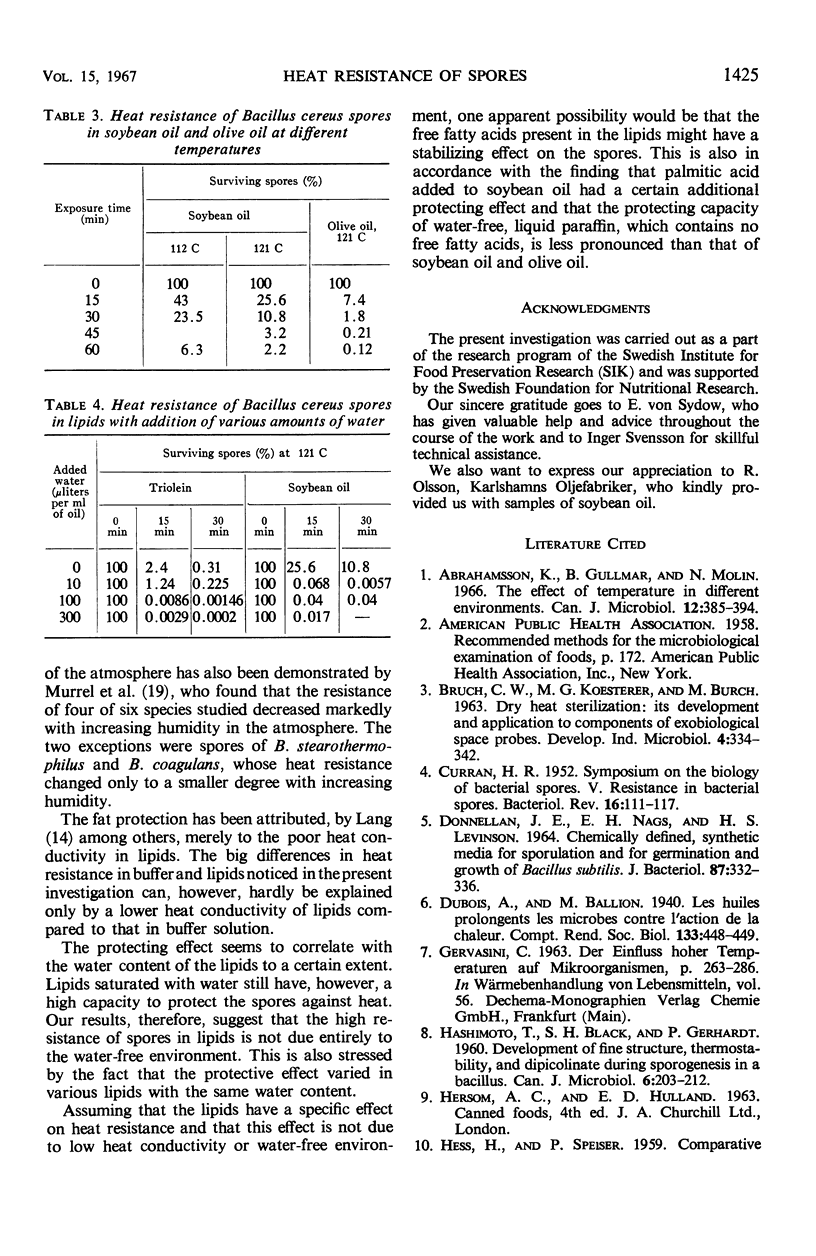
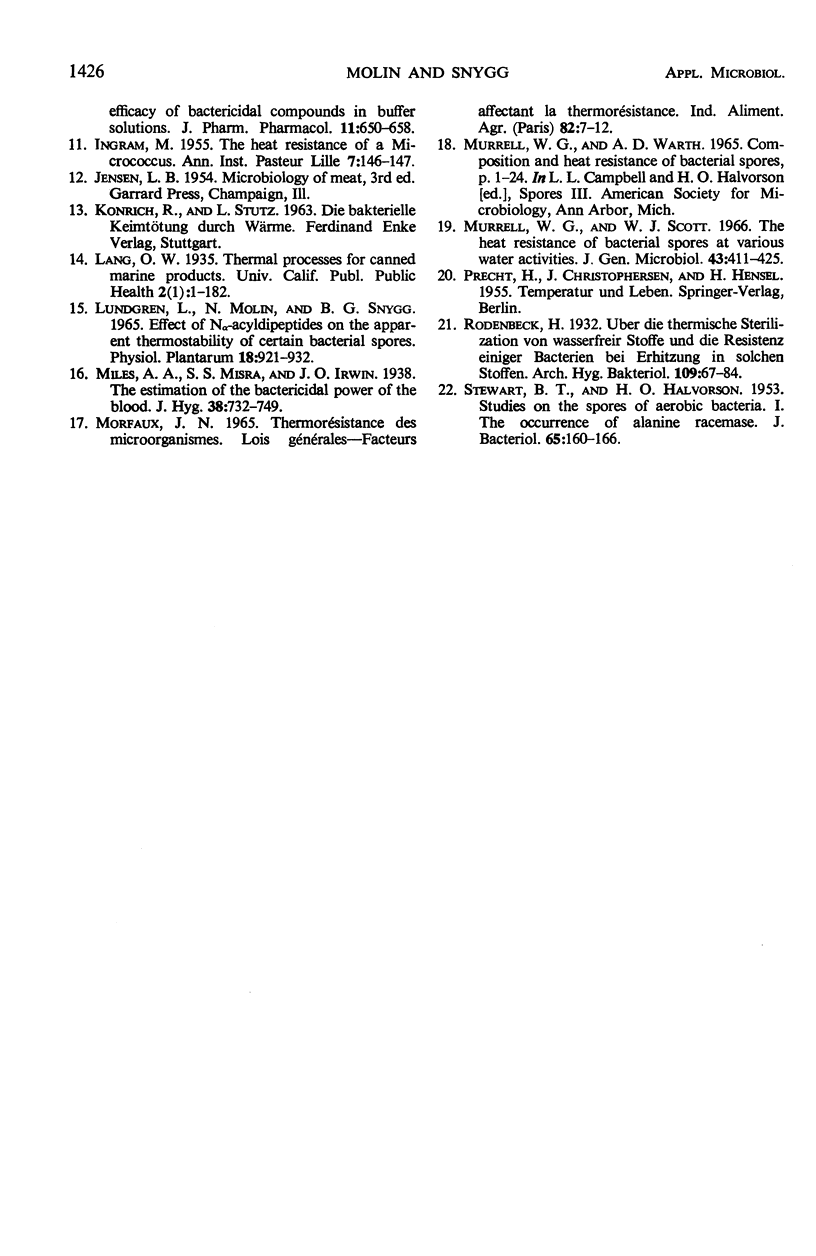
Selected References
These references are in PubMed. This may not be the complete list of references from this article.
- Abrahamsson K., Gullmar B., Molin N. The effect of temperature on toxin formation and toxin stability of Clostridium botulinum type E in different environments. Can J Microbiol. 1966 Apr;12(2):385–394. doi: 10.1139/m66-052. [DOI] [PubMed] [Google Scholar]
- DONNELLAN J. E., Jr, NAGS E. H., LEVINSON H. S. CHEMICALLY DEFINED, SYNTHETIC MEDIA FOR SPORULATION AND FOR GERMINATION AND GROWTH OF BACILLUS SUBTILIS. J Bacteriol. 1964 Feb;87:332–336. doi: 10.1128/jb.87.2.332-336.1964. [DOI] [PMC free article] [PubMed] [Google Scholar]
- HASHIMOTO T., BLACK S. H., GERHARDT P. Development of fine structure, thermostability, and dipicolinate during sporogenesis in a bacillus. Can J Microbiol. 1960 Apr;6:203–212. doi: 10.1139/m60-022. [DOI] [PubMed] [Google Scholar]
- HESS H., SPEISER P. Comparative efficacy of bactericidal compounds in buffer solutions. Part I. J Pharm Pharmacol. 1959 Nov;11:650–658. doi: 10.1111/j.2042-7158.1959.tb12609.x. [DOI] [PubMed] [Google Scholar]
- INGRAM M. The heat resistance of a Micrococcus. Ann Inst Pasteur Lille. 1955;7:146–147. [PubMed] [Google Scholar]
- Murrell W. G., Scott W. J. The heat resistance of bacterial spores at various water activities. J Gen Microbiol. 1966 Jun;43(3):411–425. doi: 10.1099/00221287-43-3-411. [DOI] [PubMed] [Google Scholar]
- STEWART B. T., HALVORSON H. O. Studies on the spores of aerobic bacteria. I. The occurrence of alanine racemase. J Bacteriol. 1953 Feb;65(2):160–166. doi: 10.1128/jb.65.2.160-166.1953. [DOI] [PMC free article] [PubMed] [Google Scholar]


